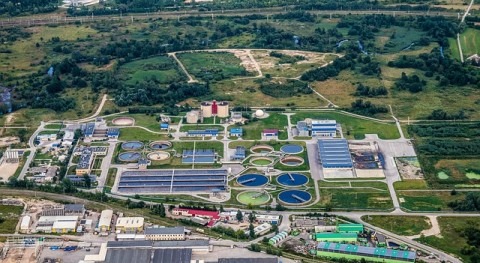How to Operate and Maintain a Waste Water Treatment Plant (WWTP)?

A waste water treatment plant (WWTP) is an essential facility that collects, treats, and discharges or reuses treated wastewater generated by a community. Proper operation and maintenance of a WWTP are crucial for ensuring the health and safety of a city's inhabitants and protecting the environment from water pollution. This article covers the most important aspects of operating and maintaining a WWTP, including monitoring, process control, preventive maintenance, safety protocols, and staff training.
1 . Monitoring and Process Control
Effective operation of a WWTP requires continuous monitoring and process control to ensure that the treatment processes are functioning as intended. Key parameters to monitor include flow rates, pH levels, dissolved oxygen, nutrient concentrations, and the presence of contaminants. Monitoring can be performed through manual sampling and analysis or by using automated sensors and control systems. Based on the monitoring data, operators can adjust process parameters to optimize treatment efficiency and maintain compliance with regulatory requirements.
2 . Preventive Maintenance
Regular preventive maintenance is essential for maintaining the reliability and efficiency of a WWTP. This involves routinely inspecting, cleaning, and servicing equipment, such as pumps, motors, blowers, and control systems. A well-documented maintenance schedule should be established to ensure that all components receive timely attention. Preventive maintenance can help extend the life of equipment, reduce the risk of unexpected failures, and minimize overall operational costs.
3 . Safety Protocols
Ensuring the safety of WWTP personnel and the surrounding community is a critical aspect of plant operation. This includes implementing safety procedures, such as lockout/tagout protocols, confined space entry procedures, and the use of personal protective equipment (PPE). Regular safety training should be provided to all staff members, and emergency response plans should be established to address potential hazards, such as chemical spills, fires, or gas leaks.
4 . Staff Training and Certification
Operating and maintaining a WWTP requires a skilled workforce with specialized knowledge in wastewater treatment processes and equipment. Staff members should receive regular training to stay up-to-date with the latest industry standards, technologies, and regulations. In many regions, wastewater treatment plant operators are required to obtain certification to demonstrate their competency. Continuing education and professional development opportunities should be provided to support the growth and development of plant personnel.
5 . Record Keeping and Reporting
Maintaining accurate and up-to-date records is a critical aspect of WWTP operation and maintenance. This includes maintaining logs of process data, maintenance activities, safety incidents, and staff training. These records can be used to identify trends, assess performance, and support decision-making. Additionally, WWTPs are typically required to submit regular reports to regulatory agencies, detailing their compliance with discharge permits and other requirements.
6 . Conclusion
Operating and maintaining a waste water treatment plant involves careful monitoring and process control, regular preventive maintenance, implementation of safety protocols, staff training and certification, and diligent record keeping and reporting. By adhering to these best practices, a WWTP can effectively treat wastewater






